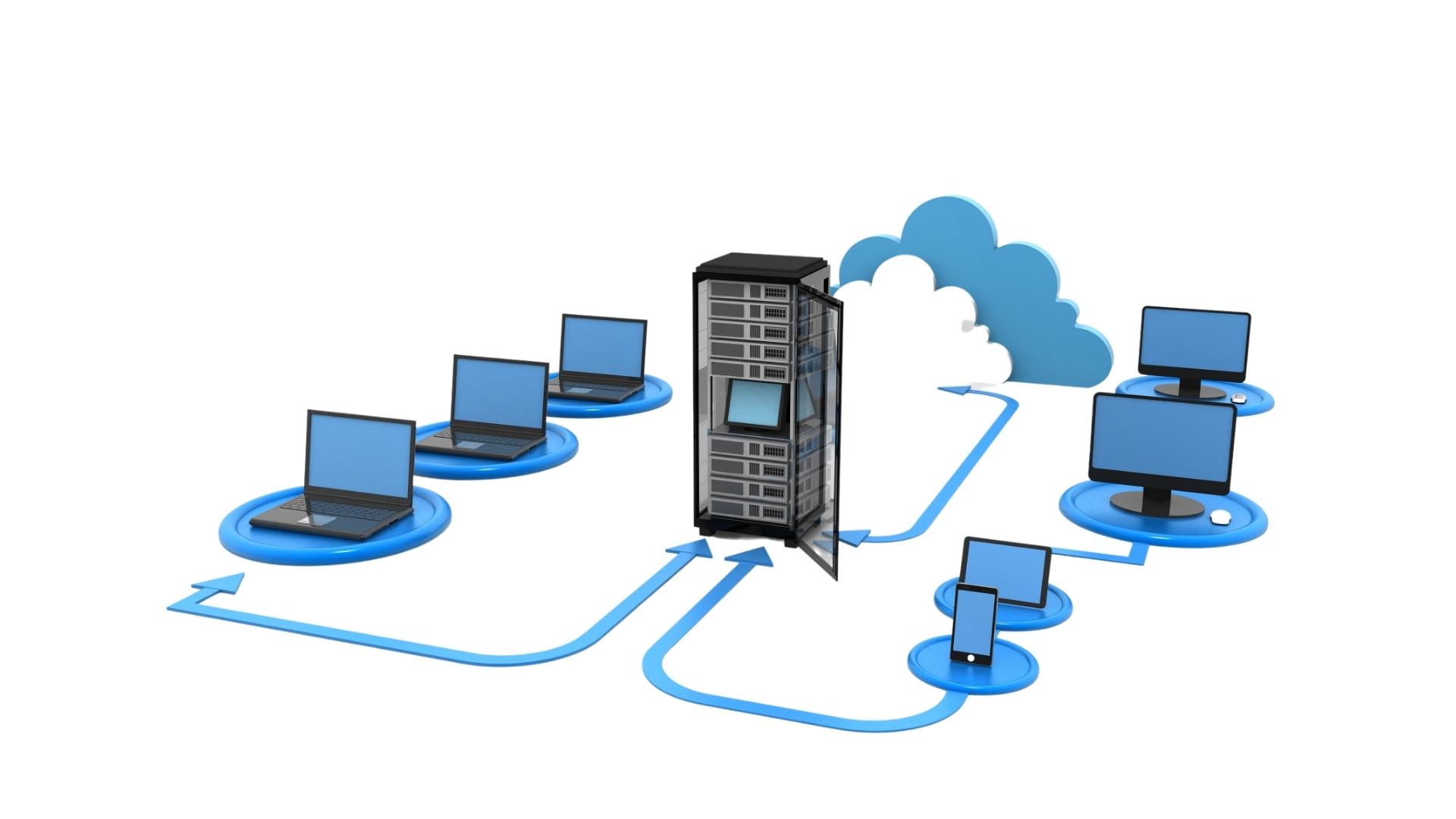Competing in today's economy requires employees to have access to their tools whether they are working from home or from the office. Azure VDI is the modern solution to enable your remote workforce.
What is Azure VDI?
Azure Virtual Desktop is a desktop and app virtualization service that runs on the Azure cloud and allows organizations to create secure virtual workspaces for users to safely access company data. Virtual desktops are hosted on virtual machines that reside on a centralized server. The data stays on the server in the Azure cloud and it allows users to login to their virtual desktop anywhere in the world from any device allowed by the organization.
What are the Use Cases for VDI?
With the global changes in work patterns, more companies are embracing VDI. Here are some of the use cases for virtual desktops that give some examples of what VDI can be used for:
Industries Needing to Meet Security and Compliance Requirements
VDI services can help industries that are required to meet strict security and compliance requirements such as financial services, health care, government and legal.
Organizations Requiring Scalability
Organizations that have been part of a merger or acquisition can get up to speed fast with Azure VDI. Another great example is companies that use independent contractors or hire temporary employees such as seasonal workers or interns. Users can be added and removed very quickly for these situations.
Remote Workforces
An increasing number of companies are implementing VDI for remote workers because virtual desktops are easier to deploy and update from a centralized location. Organizations that have employees working from home or multiple branches, field workers or employees that travel for work can all benefit from virtual desktops.
Organizations that Require Access to Legacy Applications
It’s not uncommon for organizations to require access to legacy applications which presents security risks. Allowing users to access legacy applications through a virtual desktop permits the organization to control security.
Task-Based or Shift Workers
Organizations like call centers and public computer labs that have many users who need the same software to perform limited tasks find nonpersistent VDI to be well suited to their use case. Users can login from any computer to get their work done which allows maximum flexibility.
Organizations Considering BYOD
Since processing is done on a centralized server, VDI is an ideal solution for organizations that want to allow users to work on personal devices as the data is not stored on the device. Security policiescan b e implemented that prevent tasks such as screenshots and cut and paste.
What are the Benefits of Azure VDI to Organizations?
Implementing Azure VDI has many benefits, including:
Enables Secure Remote Work
Workers who are frequently mobile or work remotely can pull up a virtual desktop containing their full range of virtual apps and data. VDI is like having a mobile office available on-demand. Azure VDI creates a high-performance experience for users regardless of where they are located.
Improves IT Efficiency
VDI lets IT admins configure their network settings, add users, deploy desktop apps, and control security from a central location in record time. Virtual desktops eliminate the need for IT to configure each endpoint manually, making it easy to provision desktops almost instantly. An added benefit is that Azure VDI is integrated with the security and management of Microsoft 365, further streamlining processes for IT.
Enhances Data Security
Because VDI is centralized and sandboxed, it can be a foundational component of a company’s security strategy. It eliminates the IT headache of having sensitive company data stored locally on client devices. A benefit of non-persistent images is they provide a new desktop each session, clearing malware and viruses upon reboot. Another security benefit is that VDI eliminates the need for VPN, which reduces one of the top security risks to organizations. VDI prevents shadow IT, or using information technology systems, devices, software, applications, and services without direct IT approval which puts IT back in control of the company’s data security.
Lowers IT Costs
Because VDI processing is server-based, there’s no need for expensive or cutting-edge hardware. VDI allows for less expensive computing devices such as thin clients, and extends the lifecycle of physical hardware. VDI also saves money on IT infrastructure, server licensing and computer deployment and maintenance.
How is Azure Virtual Desktop Different From Other VDI Solutions?
Multi-Session Capability
Windows 10 and Windows 11 Enterprise multi-session capability is unique to Azure Virtual Desktop. It allows organizations to decrease the number of virtual machines and the corresponding Windows server operating system licensing costs. This is massive for small to mid-sized organizations where VDI hasn’t been cost effective with other options.
Lower Infrastructure Costs than On-Premise VDI Options
Azure Virtual Desktop will require a Microsoft Azure Subscription, Microsoft 365 licensing and some consulting in the initial setup and deployment. Azure VDI utilizes Azure’s scaling model to allow organizations to pay for what they use instead of having to make substantial capital investment for on-premises hardware and software. In comparison, a typical on-premises deployment for Citrix VDI consists of purchasing on-premises servers, Windows Server Operating System licensing, Microsoft RDS CALS, Citrix licensing, additional Microsoft Office licensing and requires costly ongoing support services from Citrix or a third party consultant. Although Citrix offers a more full featured solution than Azure VDI, the upfront investment is an important factor in the decision on which option is best for an organization.
Rapid Deployment and Scalability
The rapid deployment framework of Azure Virtual Desktop is another reason why Azure Virtual Desktop is gaining market share among mid-market and enterprise clients alike. Azure allows you to deploy quickly and scale faster than on-premise VDI solutions.
Simplified Ongoing Management
Providing ongoing support for other VDI options is necessary due to the complexity and skills required to maintain their complex infrastructure. In contrast, Azure VDI is delivered in Microsoft Azure and utilizes existing skills many organizations or their partners already have.
In summary, the lower cost makes Azure VDI a great option for mid-market businesses who want a hosted VDI environment and don’t want to be delayed with a complex deployment model and higher levels of investment. For organizations that need the full-featured solution Citrix delivers, you can now migrate your on premise Citrix Virtual Apps and Desktops environment to Azure to take advantage of the benefits of both solutions.
What Do You Need To Get Started With Azure Virtual Desktop?
There are several things you need to get started using Azure Virtual Desktop. Below are the prerequisites to have in place to deploy virtual desktops and remote apps to your workforce using Azure VDI.
At a high level, you'll need:
- An Azure account with an active subscription
- An identity provider
- A supported operating system
- Appropriate licenses
- Network connectivity
- A Remote Desktop client
Conclusion
Windows Virtual Desktop enables a highly secure, remote desktop experience from virtually any device. The rapid scalability and reliability without the need for expert support are good reasons to choose Azure Virtual Desktop as your VDI solution.
Would Azure VDI benefit your organization?
To learn more about Azure Virtual Desktop download the Microsoft Azure Virtual Desktop eBook.





